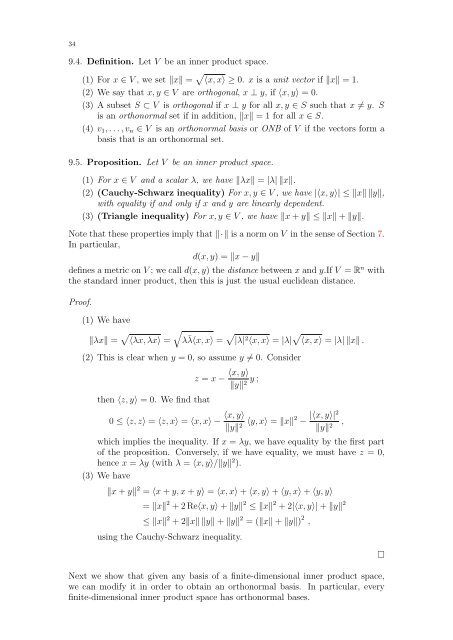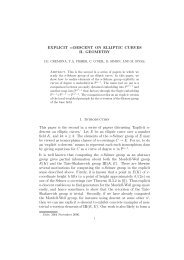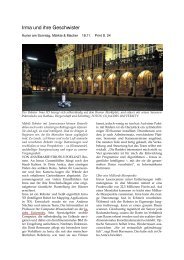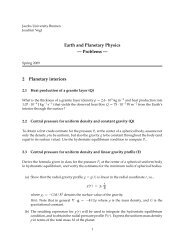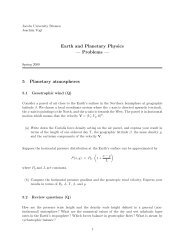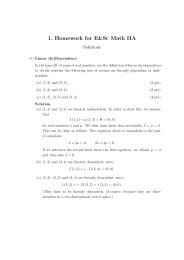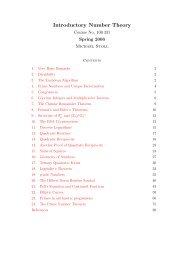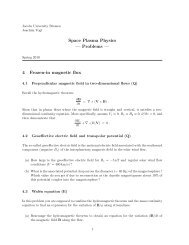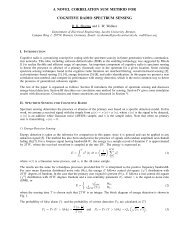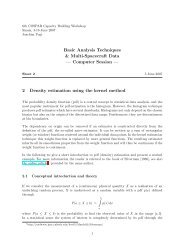Linear Algebra II (pdf, 500 kB)
Linear Algebra II (pdf, 500 kB)
Linear Algebra II (pdf, 500 kB)
You also want an ePaper? Increase the reach of your titles
YUMPU automatically turns print PDFs into web optimized ePapers that Google loves.
34<br />
9.4. Definition. Let V be an inner product space.<br />
(1) For x ∈ V , we set x = 〈x, x〉 ≥ 0. x is a unit vector if x = 1.<br />
(2) We say that x, y ∈ V are orthogonal, x ⊥ y, if 〈x, y〉 = 0.<br />
(3) A subset S ⊂ V is orthogonal if x ⊥ y for all x, y ∈ S such that x = y. S<br />
is an orthonormal set if in addition, x = 1 for all x ∈ S.<br />
(4) v1, . . . , vn ∈ V is an orthonormal basis or ONB of V if the vectors form a<br />
basis that is an orthonormal set.<br />
9.5. Proposition. Let V be an inner product space.<br />
(1) For x ∈ V and a scalar λ, we have λx = |λ| x.<br />
(2) (Cauchy-Schwarz inequality) For x, y ∈ V , we have |〈x, y〉| ≤ x y,<br />
with equality if and only if x and y are linearly dependent.<br />
(3) (Triangle inequality) For x, y ∈ V , we have x + y ≤ x + y.<br />
Note that these properties imply that · is a norm on V in the sense of Section 7.<br />
In particular,<br />
d(x, y) = x − y<br />
defines a metric on V ; we call d(x, y) the distance between x and y.If V = R n with<br />
the standard inner product, then this is just the usual euclidean distance.<br />
Proof.<br />
(1) We have<br />
λx = 〈λx, λx〉 =<br />
<br />
λ ¯ λ〈x, x〉 = |λ| 2 〈x, x〉 = |λ| 〈x, x〉 = |λ| x .<br />
(2) This is clear when y = 0, so assume y = 0. Consider<br />
z = x −<br />
then 〈z, y〉 = 0. We find that<br />
0 ≤ 〈z, z〉 = 〈z, x〉 = 〈x, x〉 −<br />
〈x, y〉<br />
y ;<br />
y2 〈x, y〉<br />
y2 〈y, x〉 = x2 |〈x, y〉|2<br />
−<br />
y2 ,<br />
which implies the inequality. If x = λy, we have equality by the first part<br />
of the proposition. Conversely, if we have equality, we must have z = 0,<br />
hence x = λy (with λ = 〈x, y〉/y 2 ).<br />
(3) We have<br />
x + y 2 = 〈x + y, x + y〉 = 〈x, x〉 + 〈x, y〉 + 〈y, x〉 + 〈y, y〉<br />
= x 2 + 2 Re〈x, y〉 + y 2 ≤ x 2 + 2|〈x, y〉| + y 2<br />
≤ x 2 + 2x y + y 2 = (x + y) 2 ,<br />
using the Cauchy-Schwarz inequality.<br />
Next we show that given any basis of a finite-dimensional inner product space,<br />
we can modify it in order to obtain an orthonormal basis. In particular, every<br />
finite-dimensional inner product space has orthonormal bases.


